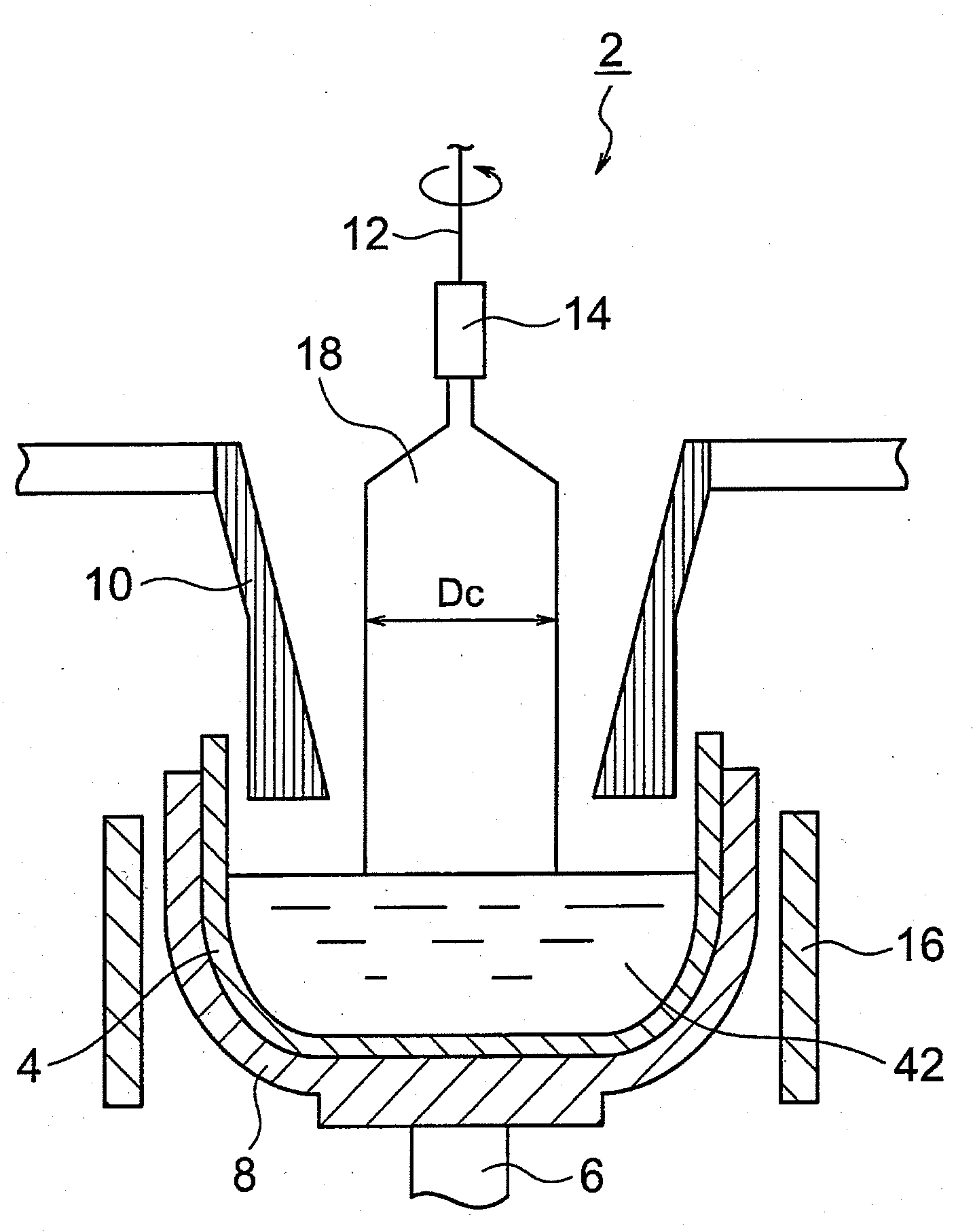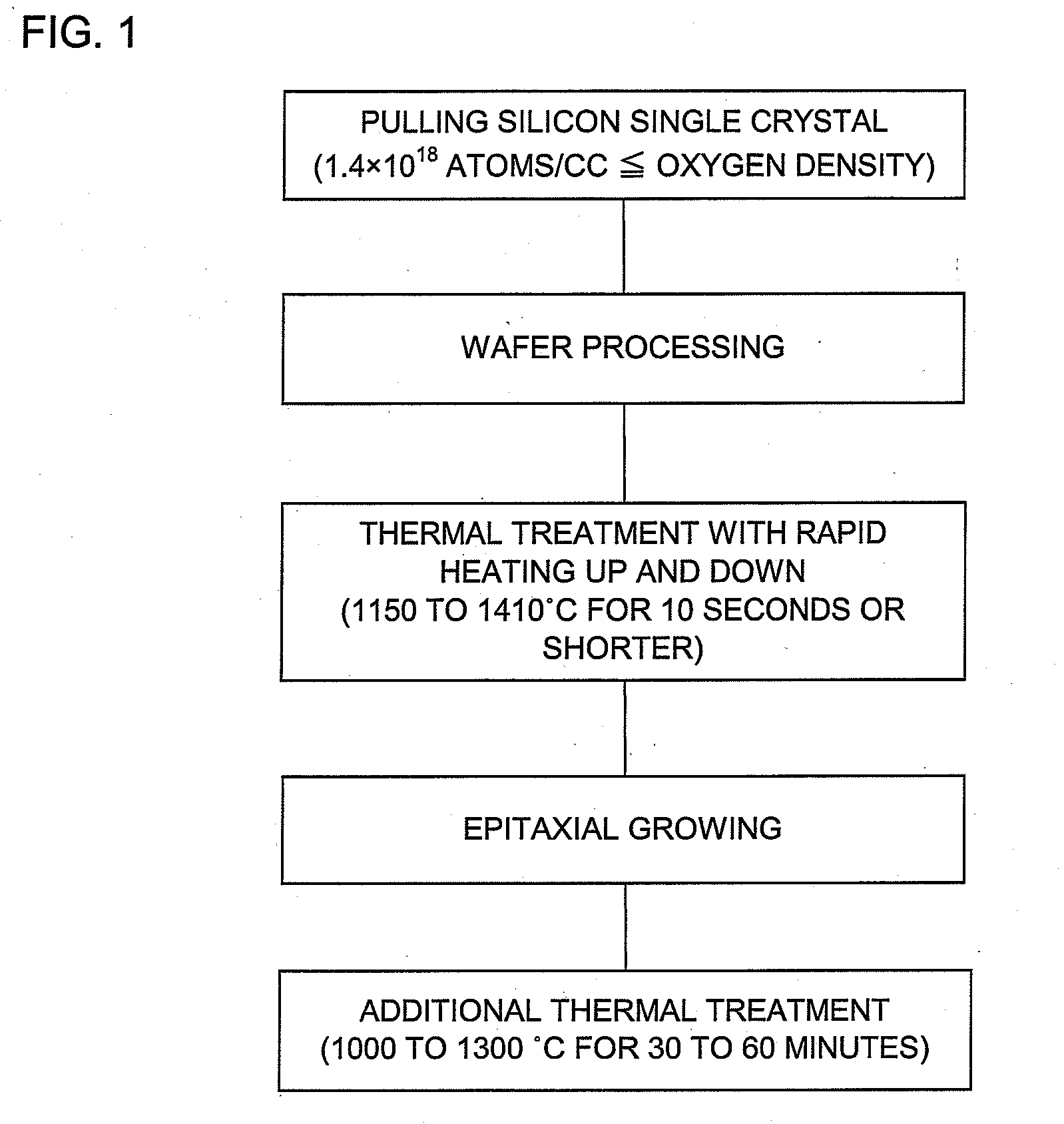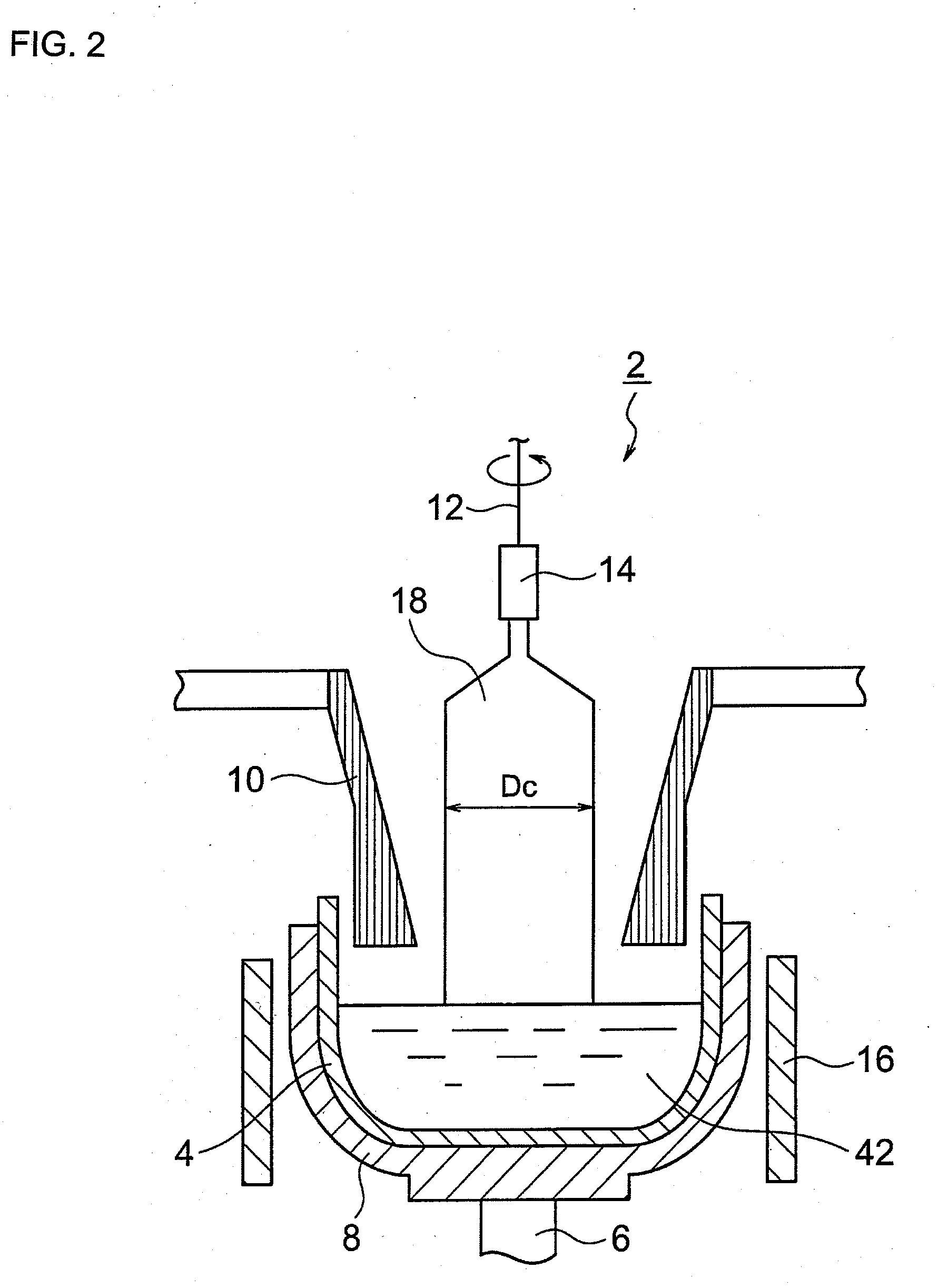Silicon single crystal wafer and the production method
a single crystal wafer and production method technology, applied in the direction of polycrystalline material growth, silicone compounds, under protective fluid, etc., can solve the problems of minute defects called “grown-in defects” arising, affecting the quality, and outward diffusion of oxygen, etc., to achieve rapid heating and high oxide film breakdown voltage
- Summary
- Abstract
- Description
- Claims
- Application Information
AI Technical Summary
Benefits of technology
Problems solved by technology
Method used
Image
Examples
first embodiment
[0026]FIG. 1 is a view of a procedure of a production method of a silicon single crystal wafer according to an embodiment of the present invention. In the production method of a silicon single crystal wafer according to the present embodiment, a silicon ingot is grown by the CZ method under a condition that initial interstitial oxygen density is high as 1.4×1018 atoms / cc (ASTM F-121,1979) or higher. It is because stable oxygen precipitate to become a gettering source does not present by an effective number immediately beneath the thin film device active layer when the oxygen density at growing the silicon is lower than 1.4×1018 atoms / cc.
[0027]During the silicon growing, it is preferable to dope nitrogen in the silicon single crystal by 1×1013 to 1×1015 atoms / cc because the defect-free area becomes larger thereby.
[0028]Next, the silicon ingot is processed to be wafers. The wafer processing is not particularly limited and general processing methods may be used.
[0029]After the wafer pr...
example 2
[0039]Comparing with the example 1, other than changing the initial interstitial oxygen density of the silicon single crystal ingot to 22.1×1017 atoms / cc (ASTM F-121, 1979) and a condition of the thermal treatment with rapid heating up and down using a halogen lamp to 1200° C. for 3 seconds; a wafer was produced under the same condition as that in the example 1 and a defect-free depth and BMD density were measured. The results were 1.8 μm in the defect-free depth and 4.9×105 pieces / cm2 in the BMD density.
example 3
[0040]Comparing with the example 1, other than changing the initial interstitial oxygen density of the silicon single crystal ingot to 14.6×1017 atoms / cc (ASTM F-121, 1979), using a flash lamp thermal treatment furnace using a xenon lamp instead of a halogen lamp and changing a condition of the thermal treatment with rapid heating up and down to 1250° C. for 0.001 second; a wafer was produced under the same condition as that in the example 1 and a defect-free depths and BMD density were measured. The results were 0.6 μm in the defect-free depth and 38.0×105 pieces / cm2 in the BMD density.
PUM
| Property | Measurement | Unit |
|---|---|---|
| temperature | aaaaa | aaaaa |
| temperature | aaaaa | aaaaa |
| temperature | aaaaa | aaaaa |
Abstract
Description
Claims
Application Information
 Login to View More
Login to View More - R&D
- Intellectual Property
- Life Sciences
- Materials
- Tech Scout
- Unparalleled Data Quality
- Higher Quality Content
- 60% Fewer Hallucinations
Browse by: Latest US Patents, China's latest patents, Technical Efficacy Thesaurus, Application Domain, Technology Topic, Popular Technical Reports.
© 2025 PatSnap. All rights reserved.Legal|Privacy policy|Modern Slavery Act Transparency Statement|Sitemap|About US| Contact US: help@patsnap.com



